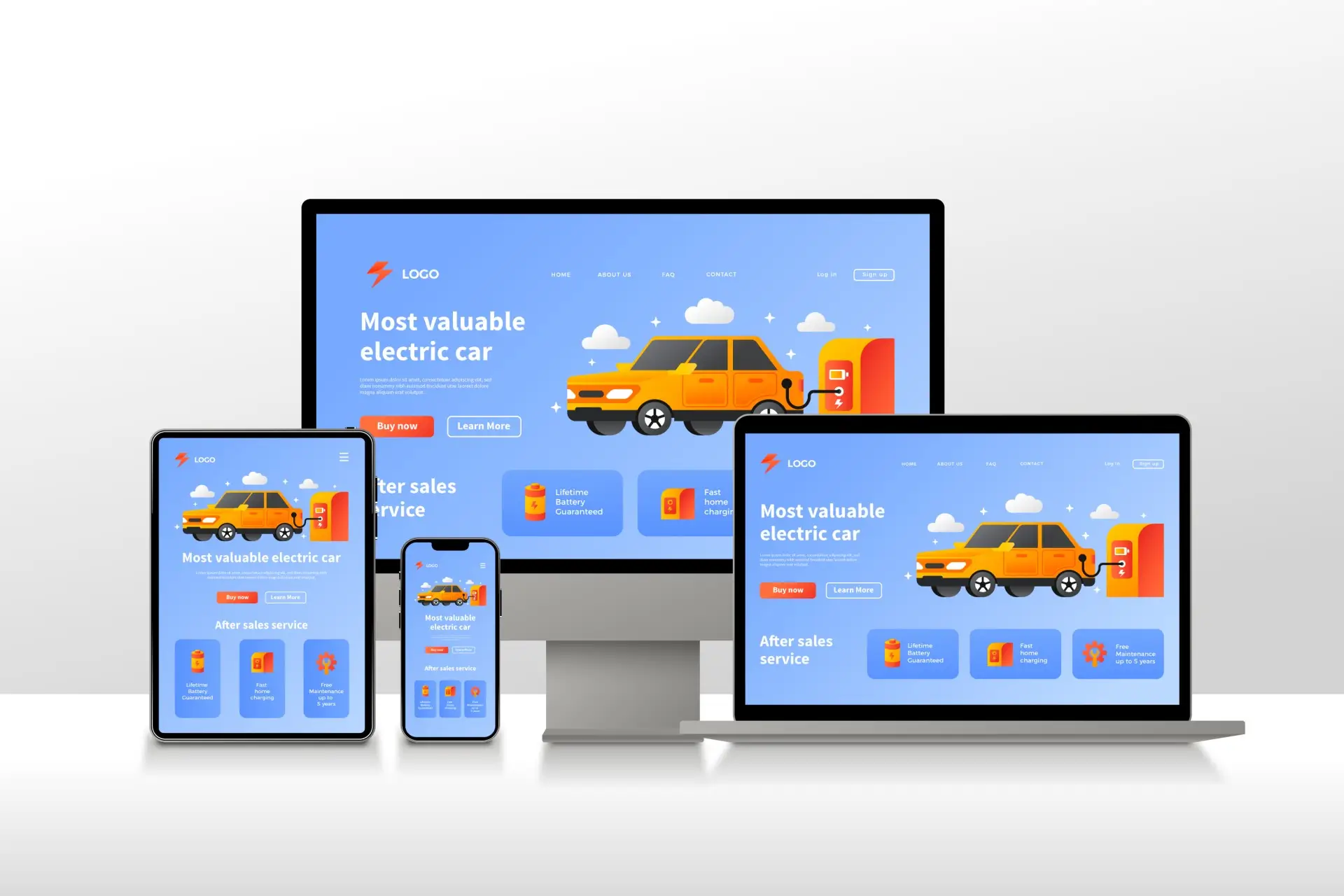
Responsive web design is a hot topic among website developers and designers, and for good reason.
Having a responsive design is essential in today's digital era. You wouldn't want your website visitors to have a poor user experience, which could ultimately harm your business.
Recognizing the significance of responsive web design, we've decided to create the ultimate guide on why it's essential for every business.
Put simply, responsive web design guarantees that your website appears impressive and operates smoothly across all devices, regardless of screen size or type. This means that whether someone is viewing your site on a desktop computer, tablet, or smartphone, the layout and content will automatically adjust to fit their screen size and viewport.
These statistics underscore the importance of responsive web design in today’s digital landscape, emphasizing the need for businesses to prioritize mobile optimization for improved user experience and business outcomes.
Responsive design ensures seamless browsing across all devices, captivating visitors and increasing the chances of a repeat engagement. A cohesive experience drives satisfaction, leading to increased conversions and long-term client retention. For instance, a responsive site for an e-commerce platform enables users to effortlessly shop on their smartphones, tablets, or desktops, enhancing their overall shopping experience.
With responsive design, managing a single website streamlines updates and reduces resources and time spent on maintenance. Centralized tracking and analytics further facilitate efficient management and optimization. For instance, a responsive website for a news outlet eliminates the need for separate desktop and mobile versions, simplifying content management and SEO strategies.
Google prioritizes responsive design, favoring websites with unified URLs and HTML. This optimization enhances indexation and sharing capabilities, ultimately improving search rankings and visibility.
Example: A responsive business website ranks higher on search engine results pages (SERPs), driving organic traffic and expanding audience reach.
Responsive design caters to the growing number of mobile users, maximizing accessibility and attracting a broader audience. Increased traffic translates to heightened brand exposure and potential customer acquisition.
Example: A responsive restaurant website allows patrons to easily access menus, make reservations, and browse reviews on their smartphones, attracting more diners and enhancing customer satisfaction.
By eliminating the need for separate desktop and mobile websites, responsive design reduces development costs and time investments. This cost-effective approach maximizes ROI while ensuring a seamless user experience across all devices.
Example: A responsive portfolio website for a freelance designer minimizes design costs and streamlines content management, allowing for efficient showcasing of work to potential clients.
Here are some insights-
Final Thoughts
In today's highly competitive market, having a responsive design is essential for maintaining a competitive edge. With the increasing reliance on mobile devices for internet browsing, it's crucial to provide users with a seamless and visually appealing experience across all devices. A responsive design ensures that your website not only looks great but also performs reliably on every device, meeting the expectations of modern consumers who demand excellence and mobile-friendly solutions.